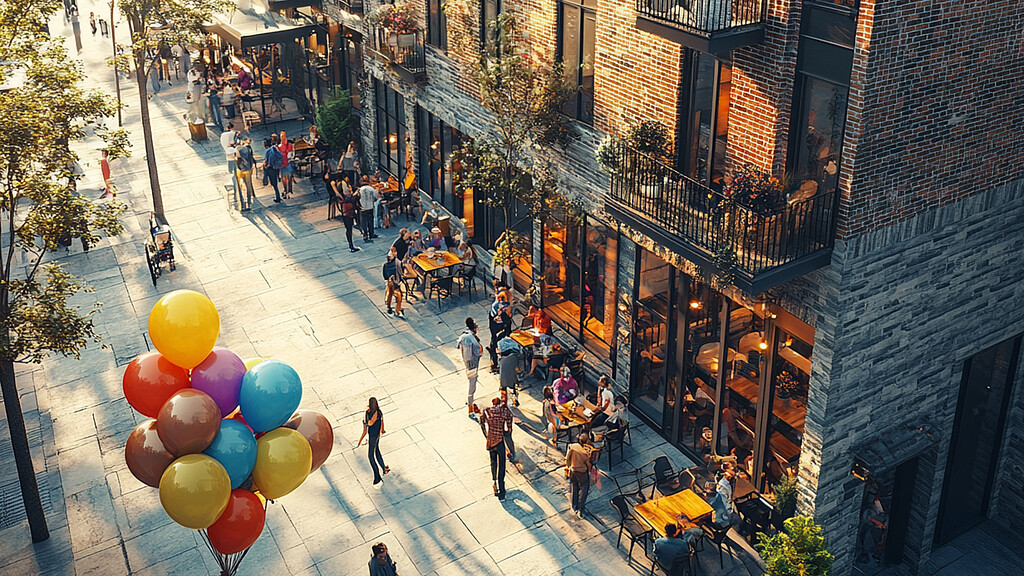Lifestyle Living Is Redefining the Home in the Age of Belonging
May 01, 2025 | By John Badman
Editor’s Note: This blog post was originally published by BTR News.
The way people live is shifting, and their homes need to evolve with them. Today, the home is no longer just a place to rest — it’s an extension of work, leisure, and social experiences. More than ever, residents see their homes as platforms for their lifestyles, spaces that reflect their values, support their ambitions, and foster meaningful connections.
This transformation is driven by a new generation of ethically conscious residents who prioritise both personal well-being and environmental responsibility. They seek homes that enhance their mental and physical health while minimising their impact on the planet. In response, lifestyle living concepts — such as co-living and build-to-rent developments — are redefining residential spaces to meet these needs.
At the core of this shift is a deep desire for belonging. We have moved through different eras of living preferences: from the Age of Efficiency, focused on consumption, to the Age of Experience, shaped by digital connectivity and brand identity. Now, we are entering the Age of Belonging, where people crave community, shared experiences, and spaces that evolve with their dynamic lifestyles.
Home is no longer just the private apartment you rent — it’s the entire building and everything that comes with it. From shared workspaces to social lounges, fitness areas, and cultural hubs, residents are embracing a more holistic way of living where the whole building functions as an extension of their home.
Five Key Living Trends for 2025
To design for this new era, we’ve identified five major trends shaping the future of living environments:
1. Place Beats Space: Size matters, but location and the sense of place matter more
Beyond the walls of a home, the surrounding neighbourhood and community play a defining role in shaping the residential experience. While unit design remains a key driver of home satisfaction, location, atmosphere, and the integration of complementary uses are equally essential in creating a place where people truly want to live.
Placemaking is about more than just adding amenities — it’s about curating an environment that feels like a destination. A successful residential setting seamlessly blends culture, community, retail, and leisure, ensuring that the streetscape and surrounding spaces contribute to a vibrant, connected way of life. As retail, food, and leisure brands evolve, they are increasingly shaping and adapting to residential neighbourhoods, reinforcing the importance of a well-balanced, mixed-use environment.
At a time when economic factors are influencing unit sizes, the quality of the broader neighbourhood experience becomes even more critical. The key is getting the mix right — creating places where residents feel engaged, connected, and inspired beyond their front doors.
2. The Future of Work is Here
The way we work has fundamentally shifted. The focus is no longer just on being present in the office — it’s about performance, wherever that may be. Gensler’s Global Workplace Survey, which gathered insights from office workers worldwide, found that employees now spend only half of their week in a traditional workplace. The rest of their time is split between home (20%) and a mix of other locations (30%) — including client offices, co-working spaces, and even on the go.
This shift raises a critical question: Are these alternative spaces designed to support productivity? As people spend less time in purpose-built offices, residential buildings and shared living environments must evolve to meet the growing demand for flexible, high-performance spaces. That means moving beyond makeshift work setups and communal benches to offer a variety of tailored environments — from quiet focus areas to collaboration-friendly lounges. Ergonomic seating that supports hours of remote work is now an essential design consideration. Homes and shared living environments must enable residents to do their best work, wherever they choose to spend their time.
3. Multi-Hyphen Spaces for Multi-Hyphen People
Going further into shifting ways of working, the rise of the multi-hyphen individual — someone who doesn’t define themselves by a single profession but instead juggles multiple roles and passions — is reshaping how we think about home and community. An accountant might also be a blogger, a musician, or a DJ, often generating income from more than one pursuit. This shift is driving demand for spaces that support flexibility, creativity, and performance in everyday life. It’s no longer just about having a spot for a laptop — homes and shared spaces must accommodate craft rooms, private booths, and soundproof areas, enabling people to seamlessly blend work, passion, and leisure.
We’re seeing this evolution reflected in both residential design and neighbourhood placemaking. Bookshops are transforming into wine bars and event spaces, and lobbies are doubling as art galleries. This shift towards creating multi-use environments highlights the growing demand for vibrant, adaptable spaces that enrich both daily life and the broader community. As people embrace more fluid lifestyles, their spaces must evolve with them.
4. Love the Apartment
In the conversation around modern living, shared spaces and amenities often take centre stage, but research shows that the private apartment remains the most critical factor in home satisfaction. According to Gensler’s Residential Experience Index, more than half of a resident’s satisfaction comes from the design and functionality of their unit, making elements like layout, room size, appliance quality, storage, and noise control essential to long-term comfort.
While shared amenities and placemaking efforts contribute to the overall experience, the apartment itself must support the evolving ways people live. Today, homes serve multiple functions — they’re not just places to sleep but spaces where residents work, exercise, entertain, and unwind. In response, flexible unit design is gaining traction. We can now customise living spaces based on needs — choosing between a second bedroom, a dedicated workspace, or enhanced storage solutions.
As residential design evolves, the focus on the apartment should not be sacrificed for the sake of shared spaces. A well-designed home remains the foundation of a fulfilling, adaptable lifestyle, ensuring that residents feel comfortable, productive, and connected within their personal space.
5. Attainable Living: Less Inside, More Outside
The future of attainable living is shifting toward affordability by reducing in-building amenities and services while leveraging the existing high street to support residents. Many renters prioritise lower costs over extensive amenities, preferring to pay less and rely on local shops for everyday needs. This trend is driving a move toward edge-of-town multifamily housing and co-living, making urban living more accessible. As high streets evolve, they could incorporate shared neighbourhood services that are connected through technology to create efficient, community-driven living environments.
The future of living isn’t just about square footage or luxury amenities. It’s about creating places with purpose, where people can live, work, and grow. As we design for the Age of Belonging, the challenge is to design homes that empower multi-hyphen lifestyles, deliver great private spaces, and provide a flexible, affordable living experience — all while fostering a genuine sense of connection.
For media inquiries, email .

